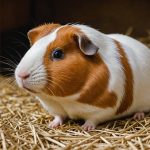Selecting the right bedding for your guinea pig can significantly impact its health and happiness. With a wide array of materials available, understanding the safest options is essential. This guide simplifies your choices, helping you navigate various bedding types while considering factors like absorption, comfort, and allergy potential. Equip yourself with the knowledge to create a cozy and secure environment for your furry friend. Your guinea pig deserves the best, and choosing the right bedding is the first step!
Overview of Guinea Pig Bedding Options
Exploring the world of guinea pig bedding can be both exciting and overwhelming.
En parallèle : Exciting Enrichment Ideas to Banish Boredom in Pet Ferrets
Choosing the right guinea pig bedding is crucial for the health and comfort of your pet. With numerous bedding types available, it's essential to understand the differences to make an informed decision. The primary options include natural and synthetic bedding materials.
Common Types of Bedding
- Paper-based bedding: Absorbent and dust-free, ideal for sensitive guinea pigs.
- Wood shavings: Economical but may contain harmful oils; choose kiln-dried.
- Fleece liners: Reusable and environmentally friendly, but require regular washing.
Importance of Choosing the Right Bedding
A clean and comfortable environment prevents respiratory issues and skin irritations. The right bedding promotes a healthy lifestyle, ensuring your guinea pig thrives.
A voir aussi : Effective Strategies to Repel Slugs Safely, Protecting Hedgehogs in Your Garden
Natural vs Synthetic Options
Natural options like paper and wood are biodegradable and eco-friendly, providing a more comfortable habitat. Synthetic choices, such as fleece, offer durability and ease of maintenance but may lack the natural feel some pets prefer.
"The choice of bedding can significantly affect your guinea pig's well-being," says pet care expert Dr. Jane Doe.
Consider your guinea pig's specific needs and preferences when selecting bedding. Remember, a happy guinea pig is a healthy guinea pig.
Safety Considerations for Bedding
Ensuring the safety of your guinea pig's environment is paramount.
Materials to Avoid
Selecting safe bedding is critical to prevent health issues. Avoid bedding made from cedar or pine as they contain harmful materials like aromatic oils that can cause respiratory problems. Additionally, steer clear of any bedding with chemical additives, which could lead to skin irritations or allergic reactions.
Importance of Avoiding Chemical Additives
Chemical additives in bedding can pose significant risks to your pet's safety. These substances might release harmful fumes, affecting your guinea pig's respiratory system. Always opt for natural or untreated materials when choosing bedding. This ensures a safer, more comfortable habitat for your pet.
Signs of Unsafe Bedding Use
Recognizing the signs of unsafe bedding can prevent potential health hazards. Look for indications such as sneezing, coughing, or skin redness. If you notice these symptoms, consider changing the bedding immediately.
- Watch for:
- Excessive sneezing
- Skin irritations
- Unusual odors
By understanding these safety considerations, you can create a secure and healthy environment for your guinea pig, ensuring their well-being and happiness. Prioritize safe bedding choices to keep your pet comfortable and thriving.
Popular Bedding Materials
Exploring the best bedding options for your guinea pig's comfort and health.
Hay
Hay is a natural and popular choice among guinea pig owners. It provides a soft, comfortable surface and is safe for consumption, aligning with your pet's dietary needs. However, hay can be less absorbent and requires frequent changes to maintain cleanliness.
Paper-Based Bedding
Paper-based bedding is highly absorbent and dust-free, making it ideal for guinea pigs with respiratory sensitivities. It offers excellent odor control, keeping the environment fresh. The downside is that it can be more expensive and may need regular replacement to ensure optimal hygiene.
Wood Shavings
Wood shavings are a cost-effective option, widely available and offering good absorbency. However, they may contain harmful oils unless they are kiln-dried. It's crucial to choose the right type to avoid respiratory issues.
Recommendations
- Sensitive guinea pigs: Opt for paper-based bedding to minimize dust exposure.
- Budget-conscious owners: Consider kiln-dried wood shavings for an economical solution.
- Natural feel preference: Use hay for a more authentic habitat.
By understanding the benefits and drawbacks of each bedding material, you can tailor your choice to meet your guinea pig's specific needs, ensuring their comfort and well-being.
Comfort and Well-being Factors
Exploring how bedding influences guinea pig comfort and behavior.
Role of Bedding in Providing Comfort
The right bedding significantly enhances your guinea pig's comfort and overall well-being. A cozy, soft environment helps reduce stress and encourages natural behaviors. The texture and absorbency of the bedding play a crucial role in maintaining a clean and dry habitat, preventing discomfort and health issues.
How Bedding Affects Guinea Pig Behavior
Bedding influences not only physical comfort but also the behavior of guinea pigs. Comfortable bedding encourages playful and exploratory actions, contributing positively to their mental well-being. Guinea pigs may burrow or snuggle into their bedding, which is essential for their sense of security and relaxation.
Importance of Texture and Absorbency in Bedding
- Texture: Soft, non-abrasive materials prevent skin irritations.
- Absorbency: High absorbency ensures a dry environment, reducing odor and promoting hygiene.
- Comfort: Proper bedding supports natural behaviors and reduces stress.
Choosing bedding with the right texture and absorbency is vital for your guinea pig's comfort and health. By understanding these factors, you can create an environment that supports their well-being, keeping them happy and active. Prioritize these aspects to ensure your pet feels safe and comfortable in their habitat.
Maintenance and Cleaning Tips
Ensuring a hygienic and comfortable environment for your guinea pig.
Recommended Cleaning Frequency
Regular bedding maintenance is essential for your guinea pig's health. Clean the cage at least once a week, but adjust this based on the number of pets and the type of bedding used. Paper-based bedding may require more frequent changes due to its absorbency, while fleece liners need washing every few days to prevent odor.
Tips for Maintaining a Clean Habitat
To maintain a clean habitat, spot-clean daily by removing soiled bedding and debris. This reduces odor and keeps the environment fresh. Use a mild, pet-safe disinfectant during weekly cleanings to sanitize the cage. Ensure the cage is completely dry before adding new bedding to prevent mold growth.
- Daily tasks: Spot-clean soiled areas
- Weekly tasks: Full cage cleaning and disinfection
- Essential tools: Broom, dustpan, pet-safe disinfectant
How to Handle Soiled Bedding Properly
Proper disposal of soiled bedding is crucial. For biodegradable options like paper or wood, consider composting. Always wear gloves to avoid direct contact with waste. Double-bag non-compostable materials to prevent leaks and odors. Prioritize hygiene to ensure your guinea pig's habitat remains safe and pleasant.
Expert Recommendations
Insights from professionals to guide your guinea pig care decisions.
Veterinarian Advice
Consulting with veterinarians is crucial when choosing the right bedding for your guinea pig. Experts emphasize the importance of understanding your pet's specific needs, which can vary based on age, health, and temperament. Veterinarian advice often highlights the need for hypoallergenic materials, especially for guinea pigs with respiratory issues.
Expert Opinions on Bedding Choices
Experts often recommend paper-based bedding for its absorbency and low dust content. Expert opinions suggest avoiding cedar and untreated pine shavings due to the potential for respiratory problems. Additionally, fleece liners are praised for their eco-friendliness and reusability, although they require regular maintenance.
Recommended Brands and Products
- Carefresh: Known for its ultra-absorbent, dust-free properties.
- Kaytee Clean & Cozy: Offers excellent odor control and is highly recommended by professionals.
- GuineaDad: Provides soft, washable fleece liners favored in expert opinions.
Importance of Consulting Pet Care Professionals
Seeking veterinarian advice ensures that you select bedding that aligns with your guinea pig's health requirements. Pet care professionals can offer tailored recommendations based on your pet's unique characteristics. Regular check-ups and consultations can further enhance your guinea pig's quality of life, promoting a healthy and comfortable environment.
Cost Considerations
Exploring affordable options for your guinea pig's bedding needs.
Overview of Bedding Costs
Bedding costs can vary significantly based on the type and quality of materials. Paper-based bedding tends to be more expensive due to its high absorbency and dust-free properties. Wood shavings, on the other hand, are often more affordable but require careful selection to avoid harmful oils. Fleece liners represent an initial investment but can be cost-effective over time due to their reusability.
Budget-Friendly Options
For those seeking budget-friendly solutions, consider kiln-dried wood shavings. They offer a balance between affordability and safety. Alternatively, fleece liners may seem costly upfront, but their durability and reusability make them an economical choice in the long run. When selecting affordable options, prioritize materials that maintain quality without compromising your pet's well-being.
Balancing Cost and Well-being
Balancing the cost of bedding with your guinea pig's well-being is crucial. While saving money is important, ensure that the chosen bedding supports a healthy environment. Look for options that provide comfort and safety, even if they require a slightly higher investment. A small increase in bedding costs can lead to significant improvements in your guinea pig's health and happiness.
- Considerations:
- Initial investment vs. long-term savings
- Quality and safety of materials
- Impact on pet well-being
Environmental Impact of Bedding Choices
Exploring the ecological footprint of your guinea pig's bedding.
Importance of Choosing Eco-Friendly Bedding
Selecting eco-friendly bedding for your guinea pig is essential in minimizing the environmental impact. Sustainable options not only benefit your pet but also contribute to a healthier planet. Choosing materials that are biodegradable or made from recycled content can significantly reduce waste and pollution.
Overview of Sustainable Bedding Materials
Sustainable options include materials like paper-based bedding and fleece liners that are designed to be environmentally responsible. Paper bedding is often made from recycled paper products, making it a renewable choice. Fleece liners, while synthetic, are reusable, reducing the need for frequent disposal.
- Biodegradable Materials:
- Paper-based bedding
- Hay
- Kiln-dried wood shavings
Impact of Bedding Disposal on the Environment
Proper disposal of used bedding is crucial in managing its environmental impact. Biodegradable options can be composted, reducing landfill waste. In contrast, non-biodegradable materials may contribute to pollution if not disposed of responsibly. By choosing eco-friendly bedding and disposing of it properly, you can help protect the environment while ensuring a comfortable habitat for your guinea pig.
Transitioning Bedding Types
Smoothly shifting your guinea pig to new bedding options can ensure their comfort and well-being.
How to Transition Your Guinea Pig to a New Bedding Type
Transitioning your guinea pig to a new bedding type requires patience and careful observation. Start by gradually introducing the new bedding alongside the old one. Mix small amounts of the new material with the existing bedding to help your pet acclimate. Over a week or two, increase the proportion of the new bedding until the transition is complete.
Signs Your Guinea Pig Is Adapting to New Bedding
Monitor your guinea pig for signs of adaptation. Positive indicators include normal behavior patterns, such as eating, playing, and exploring. If your guinea pig seems more relaxed and comfortable, it’s a good sign they are adjusting well to the new bedding type. Watch for any signs of distress, such as excessive scratching or hiding, which may suggest discomfort.
Tips for a Smooth Transition to Minimize Stress
- Introduce gradually: Mix old and new bedding slowly.
- Observe behavior: Look for signs of comfort or distress.
- Maintain cleanliness: Keep the bedding clean to encourage adaptation.
By following these steps, you can ensure a stress-free transition, making your guinea pig's environment both comfortable and familiar.
Common Myths and Misconceptions
Clarifying misunderstandings about guinea pig bedding for better care.
Debunking Common Myths
There are several common myths about guinea pig bedding that can mislead pet owners. One prevalent misconception is that wood shavings are universally safe. While some types are suitable, others contain harmful oils. It's crucial to choose kiln-dried shavings to avoid respiratory issues.
Understanding the Facts
Another misconception is that all synthetic bedding is harmful. In reality, fleece liners are a safe, reusable option when cleaned regularly. They offer comfort and durability, debunking the myth that only natural materials are beneficial. Understanding these facts helps in making informed decisions.
Importance of Relying on Credible Sources
Relying on credible sources is essential to avoid falling for bedding myths. Pet care experts and veterinarians can provide accurate information tailored to your guinea pig's needs. Trustworthy advice ensures your pet's environment is safe and comfortable.
- Common Myths:
- All wood shavings are safe
- Synthetic bedding is harmful
- One type fits all needs
By debunking these misconceptions, you can ensure a healthier habitat for your guinea pig. Always verify information with reliable sources to support your pet's well-being.











